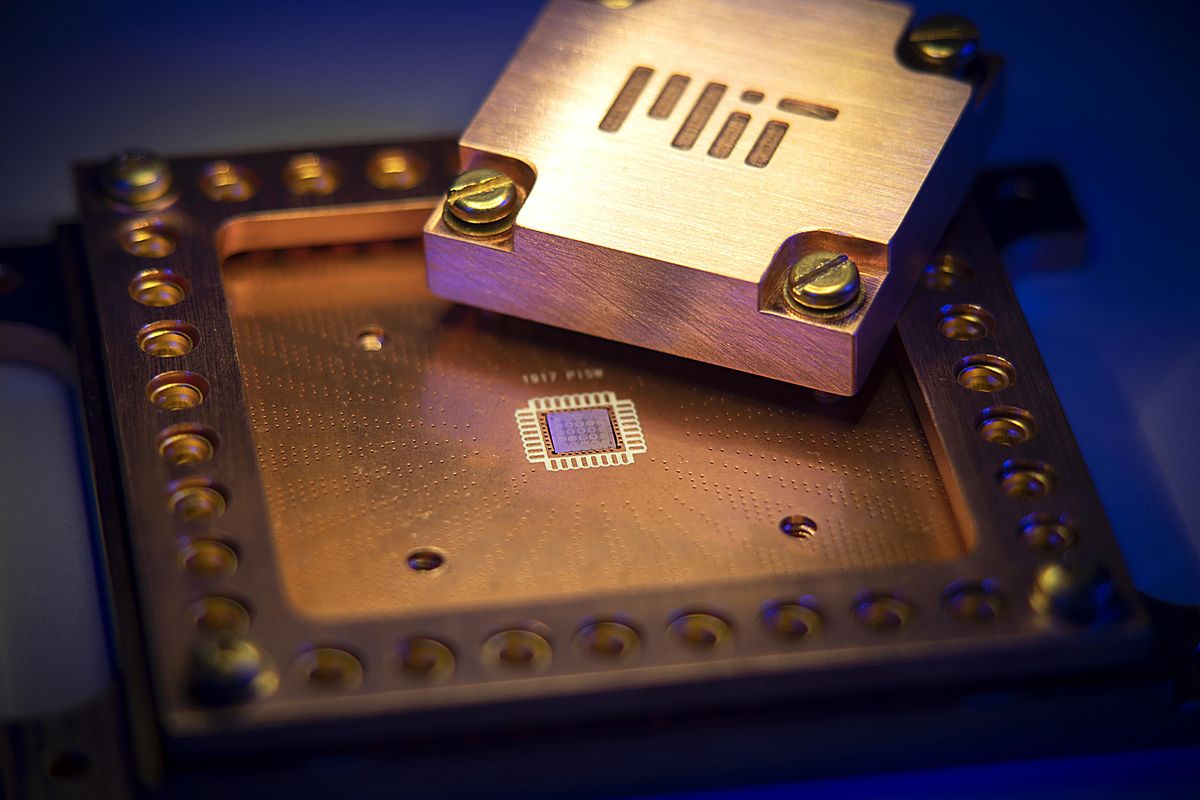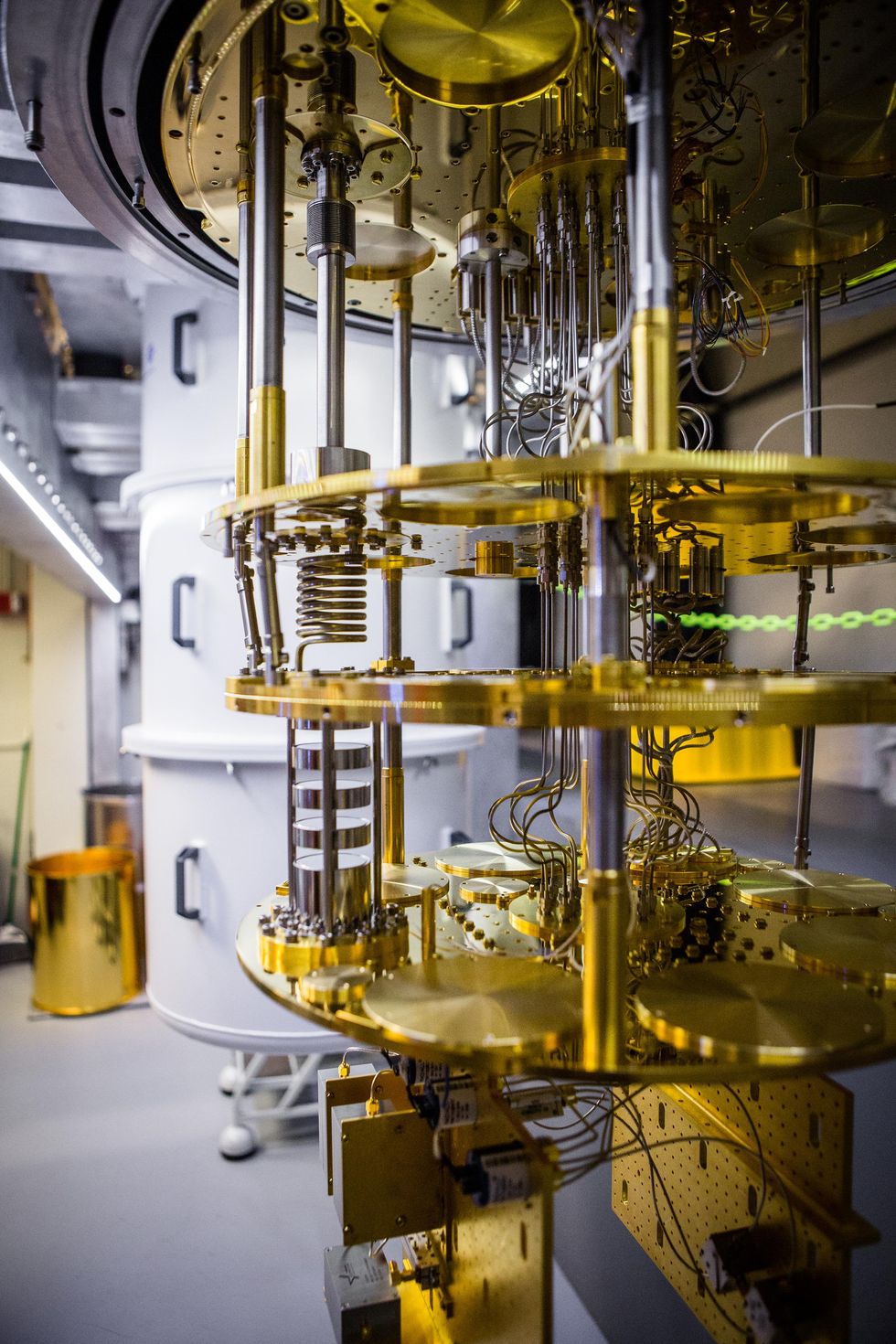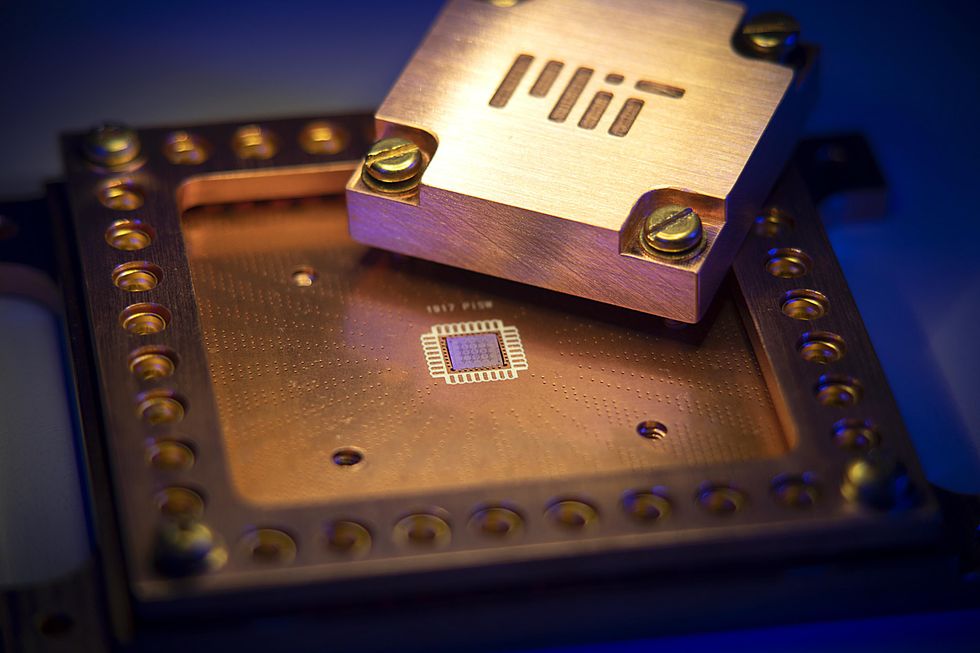A Match Made in Yorktown Heights

It pays to have friends in fascinating places. You need look no further than the cover of this issue and the article “
IBM’s Big Bet on the Quantum-Centric Supercomputer” for evidence. The article by Ryan Mandelbaum, Antonio D. Córcoles, and Jay Gambetta came to us courtesy of the article’s illustrator, the inimitable graphic artist Carl De Torres, a longtime IEEE Spectrum contributor as well as a design and communications consultant for IBM Research.
Story ideas typically originate with Spectrum’s editors and pitches from expert authors and freelance journalists. So we were intrigued when De Torres approached Spectrum about doing an article on IBM Research’s cutting-edge work on quantum-centric supercomputing.
De Torres has been collaborating with IBM in a variety of capacities since 2009, when, while at Wired magazine creating infographics, he was asked by the ad agency Ogilvy to work on Big Blue’s advertising campaign “Let’s build a Smarter Planet.” That project went so well that De Torres struck out on his own the next year. His relationship with IBM expanded, as did his engagements with other media, such as Spectrum, Fortune, and The New York Times. “My interest in IBM quickly grew beyond helping them in a marketing capacity,” says De Torres, who owns and leads the design studio Optics Lab in Berkeley, Calif. “What I really wanted to do is get to the source of some of the smartest work happening in technology, and that was IBM Research.”
Last year, while working on visualizations of a quantum-centric supercomputer with Jay Gambetta, vice president and lead scientist of IBM Quantum at the Thomas J. Watson Research Center in Yorktown Heights, N.Y., De Torres was inspired to contact Spectrum’s creative director, Mark Montgomery, with an idea.
“I really loved this process because I got to bring together two of my favorite clients to create something really special.” —Carl De Torres
“I thought, ‘You know, I think IEEE Spectrum would love to see this work,’” De Torres told me. “So with Jay’s permission, I gave Mark a 30-second pitch. Mark liked it and ran it by the editors, and they said that it sounded very promising.” De Torres, members of the IBM Quantum team, and Spectrum editors had a call to brainstorm what the article could be. “From there everything quickly fell into place, and I worked with Spectrum and the IBM Quantum team on a visual approach to the story,” De Torres says.
As for the text, we knew it would take a deft editorial hand to help the authors explain what amounts to the peanut butter and chocolate of advanced computing. Fortunately for us, and for you, dear reader, Associate Editor Dina Genkina has a doctorate in atomic physics, in the subfield of quantum simulation. As Genkina explained to me, that speciality is “adjacent to quantum computing, but not quite the same—it’s more like the analog version of QC that’s not computationally complete.”
Genkina was thrilled to work with De Torres to make the technical illustrations both accurate and edifying. Spectrum prides itself on its tech illustrations, which De Torres notes are increasingly rare in the space-constrained era of mobile-media consumption.
“Working with Carl was so exciting,” Genkina says. “It was really his vision that made the article happen, and the scope of his ambition for the story was at times a bit terrifying. But it’s the kind of story where the illustrations make it come to life.”
De Torres was happy with the collaboration, too. “I really loved this process because I got to bring together two of my favorite clients to create something really special.”
This article appears in the September 2024 print issue.


 Superconducting qubits are measured at temperatures as low as 20 millikelvin in a dilution refrigerator.Nathan Fiske/MIT
Superconducting qubits are measured at temperatures as low as 20 millikelvin in a dilution refrigerator.Nathan Fiske/MIT